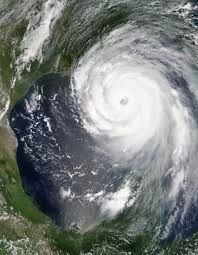The Lasting Impact of Hurricane Katrina on America

Introduction
Hurricane Katrina, which struck the Gulf Coast of the United States in August 2005, remains one of the deadliest hurricanes in American history. This catastrophic event highlighted major systemic failures in disaster preparedness and response, leaving a significant mark on social, political, and environmental aspects of the affected regions. The hurricane serves as a reminder of the vulnerabilities posed by natural disasters and the importance of effective emergency management.
The Path of Destruction
Katrina formed over the Bahamas on August 23, 2005, and quickly intensified, making landfall near New Orleans on August 29 as a Category 3 hurricane. Winds peaked at 125 mph, but the storm surge caused the most extensive damage. The failure of the levees in New Orleans led to extensive flooding, devastating entire neighborhoods, and forcing thousands of residents to evacuate. Ultimately, Katrina claimed over 1,800 lives and displaced countless others, marking a tragic turning point for the region.
The Response and Recovery Efforts
The response to Hurricane Katrina was widely criticized, revealing inadequacies in Federal Emergency Management Agency (FEMA) operations. The slow recovery process exposed deep-rooted socio-economic inequalities, particularly affecting African-American communities in New Orleans. In the aftermath, billions of dollars were allocated for rebuilding efforts, infrastructure improvements, and emergency management reforms. While progress has been made, many communities continue to grapple with the long-term effects of the hurricane.
Lessons Learned and Future Implications
Hurricane Katrina taught critical lessons about disaster preparedness and response. The importance of establishing clear communication channels, improving infrastructure resilience, and engaging communities in preparedness strategies is now widely recognized. As climate change continues to increase the frequency and intensity of hurricanes, the experiences from Katrina underscore the need for proactive planning and adaptation measures to mitigate similar disasters in the future.
Conclusion
Hurricane Katrina was not just a natural disaster; it was a wake-up call for the United States and the world. The impacts of the storm reverberate through time, shaping policies and practices in emergency management. While recovery has been ongoing, the lessons learned from this tragedy remain pertinent as we face an uncertain future in the face of climate change. By recognising the significance of these events, society can better prepare for and respond to inevitable natural disasters.









